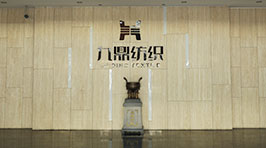
The Advantages and Disadvantages of Polyester Fabric
The process of manufacturing polyester begins in a high-temperature vacuum, creating chemical reactions. In this process, Carboxylic acid is added to acetone, and alcohol is vaporized to form long filaments. Polyester can be spun into different forms, including filaments, strands, and threads. Spun polyester takes four forms. The filament form is woven into textiles that have a smooth surface. This form is the most common.
It is widely used in home furnishings such as robes, towels, and tablecloths. It is also a common choice for bed sheets and pillowcases. Another application for polyester is in sportswear and leisure wear. Because of its ability to absorb water, it is a versatile material that is both comfortable and durable. However, it does not come without its disadvantages. This article outlines some of the advantages of polyester and its various uses.
It is easy to see why polyester is popular in clothing. It is incredibly durable, wrinkle-resistant, and keeps its shape and is an excellent choice for many everyday items. In fact, it is even used in computers. It is so common in our daily lives that it is ubiquitous. If you think that polyester is only used in sportswear, think again. It is far more than just an effective fabric. It can even be used in the construction of boat sails, and many other products.
Another important consideration when choosing polyester fabric for furniture is size. Since polyester fabric doesn't absorb water, it complements contemporary and modern homes. A foldable polyester storage bench ottoman is a versatile piece of furniture that can be used in different settings. It would be best suited for a contemporary home. To get the most use out of polyester fabric, choose a simple design and a soft and faded pastel color. This way, you'll be able to maximize the space of your home.
The most common type of polyester fabric is synthetic. This material is not biodegradable and typically takes about 200 years to break down. It's not biodegradable, so it is not a good option for the environment. But despite these cons, polyester is often the most popular type of fabric. Besides being comfortable, polyester garments also look great and last for long. Ultimately, these benefits make polyester a better option than natural fabrics.
It's also easy to care for, as polyester is quick to dry and doesn't wrinkle. In fact, you may not need to iron polyester fabric if you get it out of the washing machine right away. The Dupont company once advertised that their fabric wouldn't need ironing! It's also resistant to mildew, moths, fungi, and rot. If you want to dry clean your polyester clothing, you can use a fabric cleaner.
The process of making polyester staple fiber is a relatively straightforward one. After the polymerization of the polyester, the fiber is drawn by a machine called a spinneret. The spinning process forces the polyester molecules to align in a parallel formation, increasing the strength and tensile properties of the polyester fiber. After this, the yarn is spun and drawn onto large bobbins, or flat-wound packages. The yarn is then ready for weaving.
Because polyester has such excellent properties, it is becoming the preferred fabric for a variety of applications. It is used in clothing and furnishings, including upholstery. Clothing labels will list the amount of polyester fabric in the garment. The material can be given permanent pleats and decorative shapes laser-cut into it. It is also stain-resistant and durable. In addition to clothing, polyester fabrics can also be used to make curtains, window treatments, and other home textiles.
The process of producing polyester fabric is vast and involves massive quantities of energy and chemicals. This industry is composed of four distinct regions: North America, Europe, and Asia. A large percentage of polyester is made from petroleum, which is the main source of the fibre. In addition to this, it uses petroleum-based chemicals and is not biodegradable. To combat this, it is important to find recycled plastic bottles and polyester fiber.

It is widely used in home furnishings such as robes, towels, and tablecloths. It is also a common choice for bed sheets and pillowcases. Another application for polyester is in sportswear and leisure wear. Because of its ability to absorb water, it is a versatile material that is both comfortable and durable. However, it does not come without its disadvantages. This article outlines some of the advantages of polyester and its various uses.
It is easy to see why polyester is popular in clothing. It is incredibly durable, wrinkle-resistant, and keeps its shape and is an excellent choice for many everyday items. In fact, it is even used in computers. It is so common in our daily lives that it is ubiquitous. If you think that polyester is only used in sportswear, think again. It is far more than just an effective fabric. It can even be used in the construction of boat sails, and many other products.
Another important consideration when choosing polyester fabric for furniture is size. Since polyester fabric doesn't absorb water, it complements contemporary and modern homes. A foldable polyester storage bench ottoman is a versatile piece of furniture that can be used in different settings. It would be best suited for a contemporary home. To get the most use out of polyester fabric, choose a simple design and a soft and faded pastel color. This way, you'll be able to maximize the space of your home.
The most common type of polyester fabric is synthetic. This material is not biodegradable and typically takes about 200 years to break down. It's not biodegradable, so it is not a good option for the environment. But despite these cons, polyester is often the most popular type of fabric. Besides being comfortable, polyester garments also look great and last for long. Ultimately, these benefits make polyester a better option than natural fabrics.
It's also easy to care for, as polyester is quick to dry and doesn't wrinkle. In fact, you may not need to iron polyester fabric if you get it out of the washing machine right away. The Dupont company once advertised that their fabric wouldn't need ironing! It's also resistant to mildew, moths, fungi, and rot. If you want to dry clean your polyester clothing, you can use a fabric cleaner.
The process of making polyester staple fiber is a relatively straightforward one. After the polymerization of the polyester, the fiber is drawn by a machine called a spinneret. The spinning process forces the polyester molecules to align in a parallel formation, increasing the strength and tensile properties of the polyester fiber. After this, the yarn is spun and drawn onto large bobbins, or flat-wound packages. The yarn is then ready for weaving.
Because polyester has such excellent properties, it is becoming the preferred fabric for a variety of applications. It is used in clothing and furnishings, including upholstery. Clothing labels will list the amount of polyester fabric in the garment. The material can be given permanent pleats and decorative shapes laser-cut into it. It is also stain-resistant and durable. In addition to clothing, polyester fabrics can also be used to make curtains, window treatments, and other home textiles.
The process of producing polyester fabric is vast and involves massive quantities of energy and chemicals. This industry is composed of four distinct regions: North America, Europe, and Asia. A large percentage of polyester is made from petroleum, which is the main source of the fibre. In addition to this, it uses petroleum-based chemicals and is not biodegradable. To combat this, it is important to find recycled plastic bottles and polyester fiber.












 中文简体
中文简体 English
English Español
Español русский
русский













